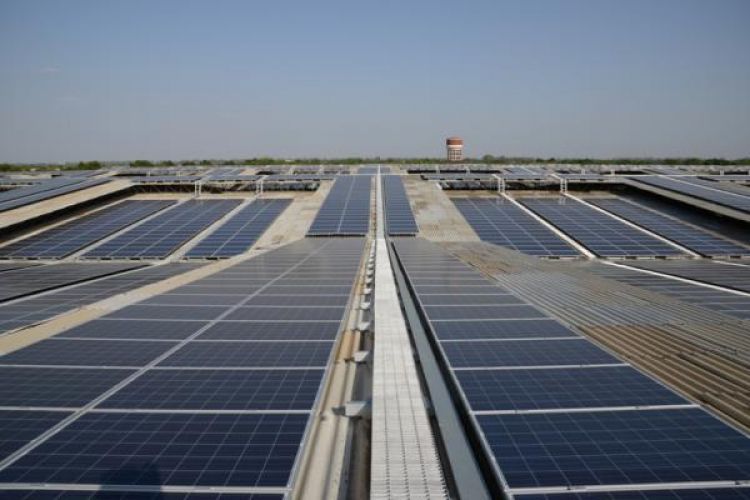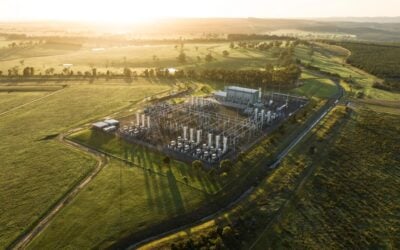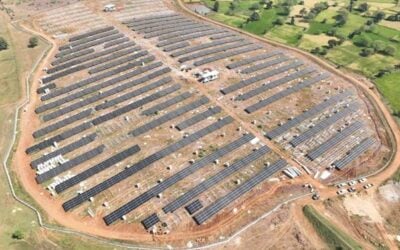
As energy system modernisation and decarbonisation progresses, energy storage could represent between 10% and 25% of India’s total installed power capacity by 2050, while other countries in South Asia including Bangladesh, Nepal and Bhutan also have “significant opportunities” for energy storage.
That’s according to a new study published by the US National Renewable Energy Laboratory (NREL), which examined the potential for energy storage in the region. NREL experts considered numerous factors like the relationship between the cost of solar PV and battery storage technologies and the impact of regulations and market design that put clean energy technologies on an even footing with fossil fuels.
Enjoy 12 months of exclusive analysis
- Regular insight and analysis of the industry’s biggest developments
- In-depth interviews with the industry’s leading figures
- Annual digital subscription to the PV Tech Power journal
- Discounts on Solar Media’s portfolio of events, in-person and virtual
Researchers look at the different roles that energy storage can play in each region: for instance, the use of fuel oil for power generation could be reduced in Bangladesh, the cross-border export of energy from Nepal and Bhutan could be increased and the utilisation of renewable energy technologies could be increased in each. NREL modelled the use of battery storage with durations ranging from 2-hour to 10-hour batteries as well as the value of pumped hydro storage.
For India, the investment potential for energy storage was evaluated under a number of different scenarios in which trajectories for technology costs, regulatory rules and policy changes varied. NREL found that in any scenario, the role of energy storage in the country’s power system grows to “play a significant role”.
India is likely to deploy between 180GW / 750GWh and 800GW / 4,900GWh of energy storage by 2050, or between 10% and 25% of total installed power capacity, dependent on the different scenarios. The ability of energy storage to provide a range of different benefits to the grid was analysed and in India battery storage investments were found to become cost-effective in 26 out of 34 states and union territories by 2030, with cost declines projected to continue.
Regulation and market design key to recognising multiple benefits of storage
Energy storage can provide a huge amount of benefit in an electric system where the time-of-use of energy is accounted for in tariffs and the use of storage for diurnal time-shifting would have the greatest impact on energy storage deployment in both the near and long-term. However, if the electric system does not allow storage to receive revenues for diurnal time-shifting, the amount of investment in storage could fall by 65%.
The more grid services batteries are able to provide, the higher the revenues and therefore the lower the cost. India is currently considering the rollout of an ancillary services market which values the fast-response times of batteries to correct grid frequency, for example. However the other single most valuable application besides time-shifting could be capacity adequacy — ensuring the grid has ample capacity available to meet peak demand — for which NREL found that four-hour batteries have the largest potential.
Other findings for India include the synergy between battery storage and solar PV deployment whereby solar PV installations decline if battery storage costs remain high; pumped hydro is likely to remain a useful and cost-competitive asset until about 2030 when battery costs will have fallen to such a point as to limit opportunities for investment; the high potential for energy storage to provide a majority of operative reserve requirements and the other system balancing, ramping and renewable energy integration services that storage can provide. India is targeting 450GW of renewable energy by 2030 and for coal, gas and hydro to contribute only 20% to the national energy mix by 2050.
NREL notes further that new regulatory proceedings may be necessary at state and national level for energy storage systems across South Asia to be able to achieve their full potential economically to provide and monetise multiple services, including providing grid services as well as participating as both load and generation. Utilities and regulators could establish agreements to quantify and compensate for the system-wide benefits storage systems can provide.
While NREL notes that Nepal, Bhutan and Bangladesh as yet have no utility-scale grid-connected storage systems between them, but the needs of each county’s system and the falling costs of the technology mean that interest in energy storage is increasing.
A pumped hydro storage project is being supported by the government in Nepal, which has a power system largely dependent on hydroelectric power of limited flexibility. In Bangladesh, which is heavily dependent on fossil fuels, a draft National Solar Energy Action Plan has recommended that the ability for industrial energy storage to offer peak shifting, load management and the balancing of variable renewable energy be recognised by policy.
Read the full report, 'Energy Storage in South Asia: Understanding the Role of Grid-Connected Energy Storage in South Asia’s Power Sector Transformation' by Ilya Chernyakhovskiy, Mohit Joshi, David Palchak, and Amy Rose, hosted at NREL's website here.






